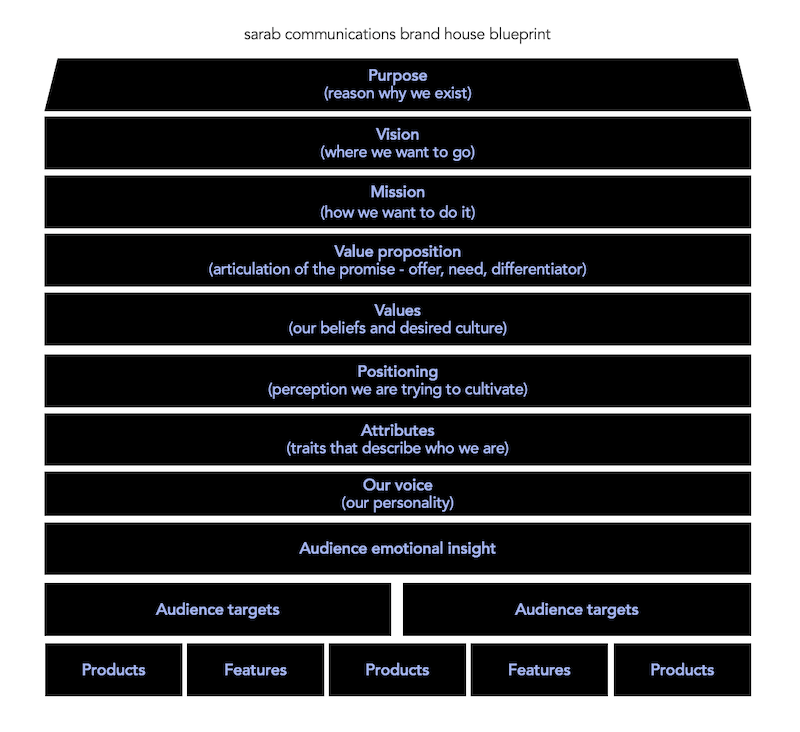Defining Brand terms and why they matter.
You might surprised (or not) to learn that brand terms are often misused, mixed interchangeably, or just simply defined differently.
There are many reasons for this - from a lack of understanding, over-reliance on marketing jargon to the vast range of brand thinkers in a dynamic and evolving field who share their own nuanced interpretations.
To simplify the matter, avoid confusion and ensure alignment with partners, collaborators and clients I tend to use the following definitions. You ready? Let’s start at the top!
(i’ll keep adding to this list, but if you have suggestions or requests, please share!)
What is a Brand?
My favorite definition is coined by British branding guru, author and agency founder Wally Olins:
“A brand is an idea that you stand for, made real by what you do and expressed through your personality.”
Why this matters: This holistic definition ties together three key components that drive perceptions - purpose, experience or product and disposition.
What is a Brand Strategy?
The ‘father of modern branding’, David Aaker put it as follows:
“Brand strategy is a long-term plan for the development of a successful brand in order to achieve specific goals.”
Why this matters: Too often a brand strategy is seen as a fluffy deliverable when it is foundational to growing your business and achieving tangible results.
What are the 4 C’s?
This is a framework (Company, Category, Consumer & Culture) to evaluate a brand and unearth it’s opportunities.
Why this matters: Often used to develop a brand strategy, it provides a holistic set of perspectives to define the strategic opportunities and positioning for your brand.
What is a Brand House or Blueprint?
Your brand strategy on a page.
Why this matters: A framework consisting of a concise snapshot of your brand strategy that can be share with all stakeholders. It can be customized and often includes many of the terms defined below (Purpose, Vision, Mission, Value Prop, Values, Positioning, Attributes, Voice) along with audience benefits, insights and segments.
What is Brand Architecture?
A conceptual framework to organize a company’s portfolio of brands, products, and services and a tool to make strategic branding decisions.
Why this matters: It defines structure, hierarchy, relationships and roles (master-brand, sub-brands, endorsed brands) naming and visual identity systems to shape perceptions, drive clarity and growth across a company’s portfolio in service of maximizing business value.
Brand architecture examples - Branded House, Sub-brands, House of Brands, Endorsed brands
What is Brand Equity?
Refers to the perceived value of a brand.
Why this matters: Driven by four dimensions - awareness, loyalty, associations and quality - the more positive the equity the greater the success (due to trust, reputation etc.). The more negative the equity, well…you know. ⤵
What is Brand Relevance?
The degree to which audiences perceive a brand (and it’s products and services) as relevant and meaningful to their lives.
Why this matters: Relevancy is critical to the success of your business - if your brand or offering serves no meaningful role in audiences’ lives, then there is no reason to buy your offering or stay a loyal customer. I see relevancy as a early warning signal - sales might not be impacted in the short-term yet, but they will overtime.
What is Purpose?
This is the reason why you exist and your role in the world.
Why this matters: Purpose is the essence that focuses everything an organization does. It guides strategy, motivates and channels energy, aligns plans and communications and brings meaning to work.
What is Vision?
I define this as where you want to go and what you want to be.
Why this matters: A vision statement is a clear and inspirational view of your brand’s future state. It serves as a northstar and creates a shared aspiration for the team or organization.
What is a Mission?
This is how we want to do it.
Why this matters: A clear mission statement articulates the approach to achieve goals and serves as a practical, unifying guide for operations.
What is a Value Proposition?
The articulation of the promise (the offering, audience need, differentiator).
Why this matters: This is the bedrock for how to communicate your promise to internal & external audiences. It translates purpose into unique benefits and serves as a foundational tool for communications.
What is Brand Positioning?
The perception we are trying to cultivate in the minds of audiences (inspired by authors Al Ries and Jack Trout).
Why this matters: A key part of any sound brand strategy, it carves out a distinctive place in the minds and hearts of audiences by articulating how your brand uniquely stands out from others and defines the desired mental space you want your brand to fill.
What are Values?
Your beliefs and desired culture.
Why this matters: Company values establish your ethical compass and cultural foundation. They guide behavior and decision making and help unify organizational identity.
What are Principles?
A set of guiding directions.
Why this matters: More specific than values, they provide practical guidance to govern company and employee actions - they often serve as the backbone of standards of conduct.
What are Brand Attributes?
The traits that describe who you are.
Why this matters: An articulation of the company’s ‘soul’ that guides behavior, shape perceptions and informs expression.
What is Brand Voice?
Your personality.
Why this matters: Embodies the personality of a company creating consistency and building a relatable and trustworthy identity across all platforms, audience touch-points. Not to be confused with tone, which can shift depending on mood, situation etc.


